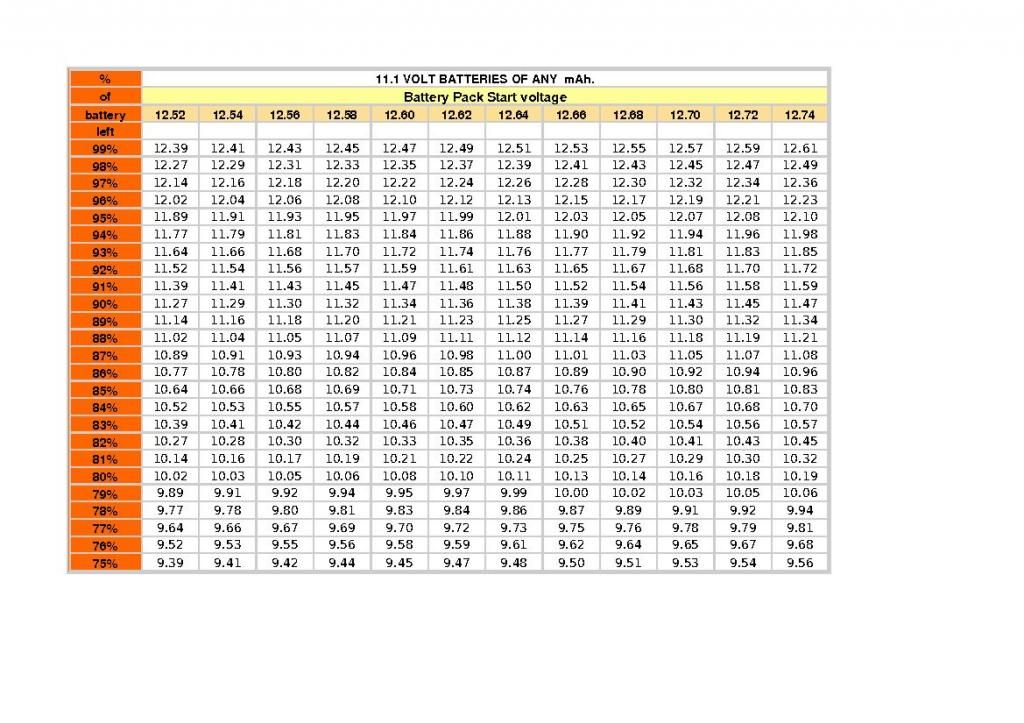lake_flyer said:
deltamike said:
The following chart was created by a friend in aero electrics.
Thanks! very handy indeed. And thank goodness, if I understand it right, my levels are safe according to this chart. I let my 12.6V Lipo's drop as low as 10.00 loaded. I see I can drop them to 10.05, if the minimum safe level is 80% of full capacity.
I assume these are unloaded values so I could even drop it 0.60 (default load) below that and still be out of the danger zone.
Am I correct?
(edited because I had the numbers mixed up)
H'mmm. Getting complicated but say you have 10 batteries and you don't use them for 2 weeks. They will all self discharge to some extent. This is where a mutimeter comes in handy to measure the voltages, but it does not make any difference what the start voltages are. Some will be low so you get shorter duration and others will be higher and therefore, a longer flight time.
On my battery test flights I think the lowest start voltage was 12.54v while the highest was 12.74 (Without looking at my thread) but whatever the voltage I would not drop any lower than 81% - I know - because in my experimentation I took a battery to 80% on the chart and wrote it off.
I plan to experiment with the 4000 mAh soon and I will enter the findings on :-
viewtopic.php?f=20&t=23071
to test duration, although I had one flight with the 4000 mAh battery that gave me 14 minutes on the same setting as my 9 minute flight of the 2200 mAh.
PLEASE NOTE :- The chart is ONLY APPLICABLE TO 11.1 VOLT BATTERIES
Regards
Pete








